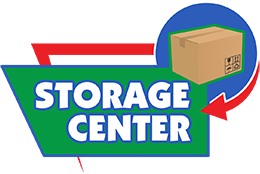Preparing Items for Storage
- Use our online Storage Calculator to determine what size unit you need.
- Place all smaller items in uniformly sized boxes. Completely fill each box with heavier items on the bottom and lighter items on the top. Uniformly sized boxes stack easier and conserve storage space.
- Pack books flat, not standing on end. This will protect the spines which will bend and warp over time if stood upright. Books are very heavy, so pack them in small boxes and don’t put them in boxes with other, more fragile, items.
- Drain gasoline and oil from all small engines, such as lawnmowers. This precaution will protect both your stored property and the property of others from the dangers of fire and explosion.
- Place mattresses in plastic covers to protect them from dust and moisture.
- Treat leather items (couches, clothes, etc.) with a leather conditioner prior to storing them. Keep furniture items off the floor by placing them on pallets.
- Have blankets, draperies and clothing cleaned, then pack them on hangers in wardrobe boxes.
- Store mirrors and pictures inside similarly sized knocked down boxes. This affords them protection from scratches and dust.
- Place blankets over furniture to protect from scratches and dust.
- Photographs tend to curl over time. To keep them flat, place between pieces of cardboard and tape them together. Do not store irreplaceable photos. Photos and negatives take up very little space. Try to keep these items with you.
- Wrap breakable items in bubble wrap and store with linens.
- Store dishes and glassware in specially made boxes called dish packs.
- Store smaller items like pillows and toys in large plastic garbage bags.
- Label boxed items. You’ll know what is in each box without opening it.
- Clean and dry all appliances prior to storage. Do not leave anything inside of appliances to be stored. Store all appliances upright with doors ajar to allow ventilation.
Do not store these items: Furs, jewelry and other expensive items, irreplaceable items, any living thing, used tires, firearms, explosives, flammables of any kind (gas, diesel, oil, paint, etc.), drugs or drug paraphernalia, stolen items, any type of hazardous items, perishable items of any kind, hazardous waste materials of any kind, items that produce odors or any item that will in any way make other tenants or the manager unhappy.
Organizing Your Storage Unit
- Use wooden pallets or boards underneath furniture and boxes. This will prevent condensation from damaging them.
- Leave a small air space between your stored items and the wall of the storage unit for ventilation.
- Store items that will not be needed to the rear of the storage unit and items you will need access to toward the front of the unit.
- Store heavy items on the bottom and lightweight items on top.
- Store smaller, more valuable items to the rear of the storage unit and large items toward the front of the unit.
- Cover everything with plastic sheeting. Wooden furniture should first be covered with blankets to avoid abrasion and moisture damage. Plastic sheeting will protect your stored goods from both dust and water damage.
- Pack your storage unit as tightly as possible. Tighter packing helps to protect stored items from moisture and dust and reduces the space needed to store your property.
- Use a high-quality disc (round) padlock to secure your storage unit. This type of lock is difficult to cut or break and offers maximum protection for very little money.
The Storage Center of Tulsa
Please call with any questions at: 918-298-6300
Office Hours: Monday through Friday: 9:00am to 6:00pm
Saturday: 9:00am to 1:00pm – Sunday: Closed
Gate Hours: Our gates are open 7 days a week from 6:00am to 10:00pm

